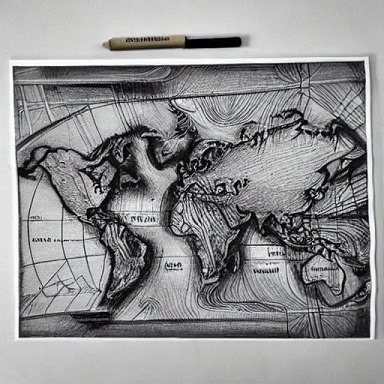Challenge Cluster 1: Geopolitics and International Relations
 This cluster is focused on challenges that can emerge if relationships between
countries shift, global alliances reconfigure themselves, and the rules governing
those relationships change accordingly. The scenarios address very distinct
geopolitical situations and outline the very different challenges each presents
within the scope of international protection. Armed conflicts, be they at the
nternational scale or limited to national or regional civil wars, are one of the
greatest concerns with regard to the futures of international protection given
the variety of challenges such conflicts present. The distinct possibility of
widespread increase in armed conflict is explicitly taken up in one scenario
(Caimans and Piranhas).
This cluster is focused on challenges that can emerge if relationships between
countries shift, global alliances reconfigure themselves, and the rules governing
those relationships change accordingly. The scenarios address very distinct
geopolitical situations and outline the very different challenges each presents
within the scope of international protection. Armed conflicts, be they at the
nternational scale or limited to national or regional civil wars, are one of the
greatest concerns with regard to the futures of international protection given
the variety of challenges such conflicts present. The distinct possibility of
widespread increase in armed conflict is explicitly taken up in one scenario
(Caimans and Piranhas).
Transit countries, and differing strategies to building relationships with them, remain a source of challenges across all scenarios. The scenarios show that different forms of cooperation and support for international protection are possible, but challenges arise from political instabilities and their sensitivity to external disruptions. Two scenarios (Sharks & Orcas and Leopard) explore economic development in transit countries and the new challenges that emerge (e.g. corruption and exploitation of refugees and migrants). A resilient and longer-term orientation of international protection activities should therefore include close cooperation with strategically selected transit countries, this might also include a strategic monitoring of transit countries. Further challenges arise as international protection applicants live in transit countries for increasingly longer durations, and the possibility of introducing of international protection quotas or other attempts to limit the number of refugees are attempted, as addressed in different scenarios.
Noted challenges
- At the level of international organisations, there remains the possibility that long standing organisations (like the United Nations or the World Trade Organization) will be asked or forced to change some of the underlying legal agreements that bind them. In particular, shifts to the conventions regarding international protection and the possibility of it being revised to include ‘climate refugees’, presented a number of challenges.
- Additionally, the economic development of present day ‘transit countries’ was viewed as a mode of reconfiguring international relationships more specific to migration and refugees. However, this was often linked to amplifying challenges of corruption and exploitation and adding complexity to specific state agreements.
- Armed conflict remains a primary challenge area for international protection, as any increase in violence (state-to-state, civil conflict, etc.) can increase the number of international protection applicants. While three scenarios look at a world with decreased state-to-state conflict, two of these scenarios describe a rise in surveillance and persecution of groups and the possibility of civil unrest. For the scenario that shows an uptick in armed conflict, the challenges for international protection multiply more rapidly.